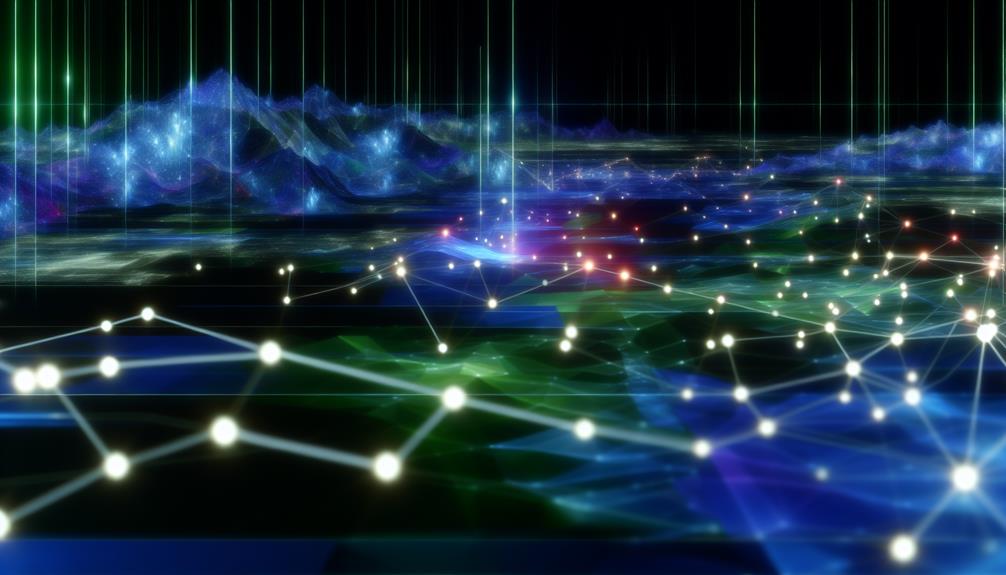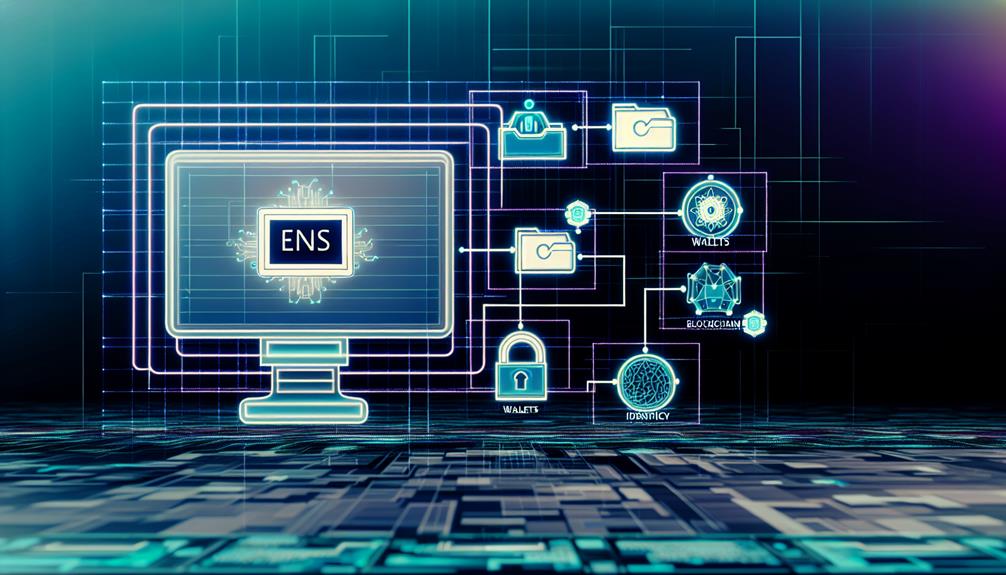When you explore the complexities of cyber domains, you uncover the essential layers that underpin our digital landscape. Understanding these layers—physical, logical, data, application, and user—can greatly refine your organization's cybersecurity strategies. It's not just about knowing the threats; it's about implementing practical measures like penetration testing and threat intelligence sharing. As you consider these elements, you might begin to question how they interconnect and what that means for security in an increasingly digital world. What insights could redefine your approach to safeguarding your assets?
Cyber Domains
Understanding cyber domains is essential for grasping the environments where cyber activities unfold, including physical, logical, and virtual spaces.
Each domain presents distinct risks and vulnerabilities that can impact your cybersecurity posture.
Defining Cyber Domain
The cyber domain refers to the interconnected digital environments where data is stored, processed, and transmitted across various networks and devices.
Understanding its definition is essential, as it encompasses critical components like the internet, cloud systems, and mobile networks, each presenting unique security challenges.
Cyber Domain Definition
A cyber domain encompasses the intricate virtual environment where digital information flows and communication occurs, integrating the internet, intranets, and diverse digital networks.
This ecosystem, comprising hardware, software, data, and users, presents unique challenges for your security team.
Understanding these domains is essential for effective cyber security and data security, enabling you to develop robust strategies to mitigate risks and safeguard sensitive information.
Cyber Domain Meaning
How do cyber domains shape the landscape of digital security? Understanding cyber domains is your first step toward effective cybersecurity management. These domains encompass the various environments where cyber activities take place, including networks, devices, data, and applications.
Each domain possesses distinct characteristics and vulnerabilities, necessitating tailored security measures to mitigate specific threats. For instance, the information domain focuses on data integrity and confidentiality, while the technology domain deals with hardware and software vulnerabilities.
By recognizing these classifications, you can better view the challenges each domain presents. The interaction between these domains is also critical; threats can easily propagate across them, amplifying risks and complicating your defense strategies.
Additionally, as technology evolves and user behaviors change, the landscape of cyber domains continuously shifts. Staying informed about these developments is essential for adapting your security measures.
You can add a comment to discuss how emerging technologies are reshaping these domains, emphasizing the importance of a proactive approach in safeguarding your digital assets. Ultimately, an all-encompassing understanding of cyber domains enables you to devise effective strategies against a diverse array of cyber threats.
What is Cyber Domain?
Maneuvering through the complexities of cyber domains reveals a multifaceted virtual environment where digital information is created, stored, exchanged, and manipulated. This environment encompasses all aspects of cyberspace, including networks, devices, and data.
The dynamic nature of cyber domains means that threats and vulnerabilities evolve continuously, requiring you to maintain ongoing vigilance and adapt your cybersecurity practices accordingly.
Key components of the cyber domain include the internet, intranets, and extranets, along with the myriad devices and systems connecting to these networks. Each of these elements can serve as potential targets for cyber threats, making it essential for you to understand their interconnections.
Recognizing the interplay between technology, human behavior, and organizational practices is vital, as these factors greatly influence your security posture and risk management strategies.
As the number of devices connected to the internet is projected to exceed 75 billion by 2025, the complexity of the cyber domain will only intensify. This surge amplifies both opportunities and risks within the cybersecurity landscape, urging you to remain proactive in safeguarding your digital assets and infrastructure.
Components of the Cyber Domain
Understanding the components of the cyber domain is essential for maintaining a robust security framework. You need to recognize how the various parts interact and how vulnerabilities can lead to significant threats.
Let's break down these components and their respective layers to enhance your security posture.
- Hardware: The physical devices that support cyber operations.
- Software: The applications and systems that process data and execute tasks.
- Networks: The interconnected systems that facilitate data communication and transfer.
Parts of the Cyber Domain
The cyber domain consists of several integral components that form its foundation, namely networks, devices, data, and users.
Each element plays a distinct role in shaping the interactions and vulnerabilities present in this digital environment.
Understanding these parts is essential for developing effective cybersecurity strategies and mitigating risks associated with cyber activities.
What Things Are Part of the Cyber Domain?
In today's interconnected world, various components form the cyber domain, each playing an essential role in digital communication and processing.
You'll find hardware like servers and routers, software applications, and security tools that manage operations.
Data traverses networks, which are interconnected systems facilitating exchange, but also expose vulnerabilities.
Understanding these elements is vital for steering and securing the cyber landscape effectively.
Cyber Domain Layers
While maneuvering through the complexities of the cyber domain, it's vital to recognize its five distinct layers: physical, logical, data, application, and user. Each layer plays an important role in shaping your organization's overall security posture.
The physical layer forms the backbone, comprising hardware like servers, routers, and other network devices that enable cyber operations. Without a secure physical infrastructure, vulnerabilities can proliferate.
The logical layer builds on this foundation, incorporating software, protocols, and services that facilitate communication and data exchange across the physical infrastructure.
Moving up, the data layer centers on the information stored, processed, and transmitted, highlighting the necessity for robust data protection and integrity measures.
Next, the application layer encompasses the software applications utilized by end-users, where vulnerabilities can be exploited if not properly managed.
Examples Within Cyber Domains
Understanding the various examples within cyber domains can enhance your grasp of the field's complexities.
By examining case studies and real-world applications, you can identify how specialized roles address specific cybersecurity challenges.
Here are a few key areas that illustrate this diversity:
- Penetration Testing: Evaluating vulnerabilities in systems before attackers do.
- Incident Response: Managing and mitigating the impacts of security breaches effectively.
- Threat Intelligence: Analyzing data to predict and respond to potential cyber threats.
Cyber Domain Examples
In understanding cyber domains, it's essential to examine real-world applications that illustrate their significance.
For instance, consider how penetration testing identifies vulnerabilities in systems or how incident response teams mitigate the impact of breaches.
Each example highlights the specialized skills required and the ongoing need for professionals to adapt to evolving threats.
Real-world Applications of Cyber Domains
Cyber domains play an essential role in today's digital landscape, serving as the foundation for various security practices that protect sensitive information and systems.
You'll find applications like penetration testing, where ethical hackers expose vulnerabilities. Security Operations Centers (SOCs) monitor threats in real-time, while cyber intelligence gathers data to foresee attacks.
Compliance with frameworks like GDPR guarantees governance and risk management are in place.
Case Studies on Cyber Domain Usage
Organizations today are increasingly recognizing the essential role of cyber domain strategies in enhancing their security posture. Case studies reveal that by regularly employing penetration testing, companies have greatly reduced their vulnerability to cyber-attacks, with incidents dropping by up to 30%.
For instance, the implementation of a Security Operations Center (SOC) has proven effective; organizations with SOC capabilities have experienced a remarkable 40% reduction in incident response times.
Moreover, fostering a cybersecurity culture is imperative. Companies that conduct regular employee training on threat awareness have observed a staggering 75% decrease in successful phishing attempts. This highlights the importance of human factors in cybersecurity.
Additionally, organizations leveraging threat intelligence sharing have reported a 50% faster detection rate of emerging threats—an integral aspect of proactive defense.
Implementing robust incident response plans is also essential. Case studies indicate that organizations adopting these plans achieved a 60% decrease in the average time to recover from cyber incidents, thereby minimizing operational disruptions.
These examples illustrate that strategic investments in cyber domain initiatives not only enhance security but also create a more resilient organizational framework against cyber threats.
Discussion on the Fifth Domain Cyber
As you consider the evolution of cyber domains, recognize how the Fifth Domain uniquely integrates physical and digital spaces, reshaping military and civilian operations.
Future trends suggest an escalating complexity in cyber warfare strategies, necessitating an agile response to emerging threats.
Understanding these dynamics is essential for anticipating the implications on national security and infrastructure resilience.
The Evolution of Cyber Domains
In traversing the complexities of modern security challenges, the emergence of the Fifth Domain of Cyber has transformed how we comprehend the intersection of cyberspace with physical, social, and cognitive environments.
This evolution emphasizes that cyber threats aren't solely technical issues; they encompass socio-political and psychological dimensions inherent in warfare and conflict today.
As cyber-physical systems like the Internet of Things (IoT) proliferate, you must recognize the critical need for security measures that extend beyond traditional IT boundaries.
The interconnectedness of cyber operations with national security and economic stability highlights that effective cybersecurity isn't just an IT concern; it's a multidisciplinary effort involving various sectors.
Acknowledging the Fifth Domain fosters a collaborative defense strategy, where public and private entities unite to tackle vulnerabilities.
This partnership is essential for responding to cyber threats, which can disrupt societal resilience and economic viability.
Understanding these dynamics allows you to better anticipate how cyber incidents might impact broader operational environments, shifting your perspective on cybersecurity from a reactive stance to a proactive, strategic approach.
Future Trends in Cyber Domains
While the Fifth Domain of Cyber continues to evolve, recognizing future trends is essential for shaping effective cybersecurity strategies. As the lines between cyberspace and the physical world blur, understanding human behavior and societal interactions becomes critical.
The rise of interconnected devices and the Internet of Things (IoT) amplifies vulnerabilities, urging you to adopt a thorough security framework that encompasses both cyber and physical threats.
You'll notice organizations increasingly embracing a holistic cybersecurity posture. This approach incorporates not just technology, but also policies, education, and community engagement, aiming to mitigate risks effectively.
By fostering a culture of awareness among users, you can enhance resilience against evolving cyber threats.
Artificial intelligence and machine learning will play pivotal roles in this landscape. Their integration into cybersecurity will enhance situational awareness and enable proactive defense mechanisms.
As these technologies continuously monitor and respond to threats, they'll help you stay ahead in a dynamic environment.
Ultimately, the future of cybersecurity in the Fifth Domain hinges on your ability to adapt and integrate diverse strategies, ensuring that both human and technological elements work in concert to safeguard society.




